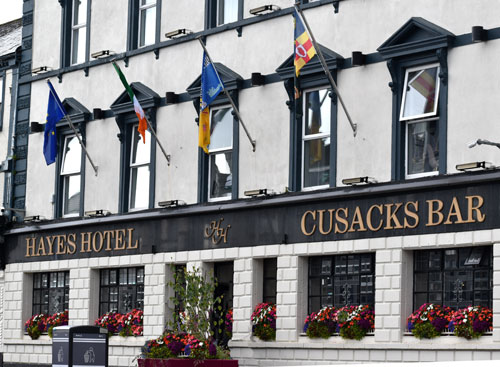Good humouredly described by someone recently, as being “A cross between a game of Ice Hockey and Murder”; yet over 80,000 spectators from home and abroad will descend on Croke Park, Dublin, on Sunday next, July 23rd 2023, to watch Co. Kilkenny, (the latter ‘All-Ireland winners’ 36 times in total, between the years 1921-2019), compete with the current reigning champions Co. Limerick, in the game of Hurling.
Hurling remains the fastest field sport in the world today, with the ball often reaching speeds of up to 100mph and with, on average, an estimated 350,000 hurley sticks produced every year within the Irish State.
One of the oldest games still in existence in the world, the game of “Hurling” dates back to early times, here in Ireland, with the first written reference to the game appearing in the written Brehon laws of the 7th century.
However, references to hurling were made much earlier in tales of the heroics of the Irish legend, warrior hero and demigod, Sétanta. Latter would gain his possibly better-known name, after killing the craftsperson Culann’s fierce guard dog, in self-defence; having driven a hurling ball (sliotar) deep into the animals throat, using his hurley stick, thus resulting in the choking the unfortunate animal.
Sétanta offered to take the dogs place, until a replacement could be located or another animal reared, hence he, Sétanta, became the “Hound (Irish for which is “Cú”) of Culann“; hence his new name/title “Chullainn”.
While banned in the 12th century by Norman invaders who had arrived into Ireland, the game of hurling nevertheless, continued to grow in popularity up until the early 19th century, before Irish customs and traditions became again heavily repressed and which saw hurling decline across the island, with the exception of strongholds here, within the province of Munster.
This decline was to change following an article written by Co. Clare man Michael Cusack, called ‘A Word about Irish Athletics’ which appeared in both the ‘United Ireland’ and ‘The Irishman’ newspapers.
On October 11th, 1884 Cusack’s article to both papers was supported by a communication from Tipperary man Maurice Davin, who had dominated athletics for over a decade and who gave his full support to the October 11th publications.
A week later Cusack submitted a signed letter to both newspapers announcing that a meeting would take place in the Hayes Commercial Hotel, Thurles, Co. Tipperary; staged to take place on November 1st 1884.
Thus the first meeting of the Gaelic Athletic Association (GAA) for the Preservation and Cultivation of National Pastimes took place, recognising that Ireland’s indigenous sports needed to be preserved standardised and regulated.
At the meeting Maurice Davin was elected President, while 3 other attendees namely Michael Cusack, John Wyse Power and John McKay were elected as secretaries. Archbishop Thomas William Croke, Charles Stewart Parnell and Michael Davitt were invited to become patrons.
The newly formed Gaelic Athletic Association would cover both of Ireland’s indigenous games identified as Gaelic Football and Hurling. GAA clubs quickly began to spring up all over Ireland and people began to play the games of Hurling and Gaelic Football and take part in Athletic events with pride.
The first All-Ireland hurling match took place in 1887, in Birr, Co. Offaly, with Co. Tipperary defeating Co. Galway.


Leave a Reply